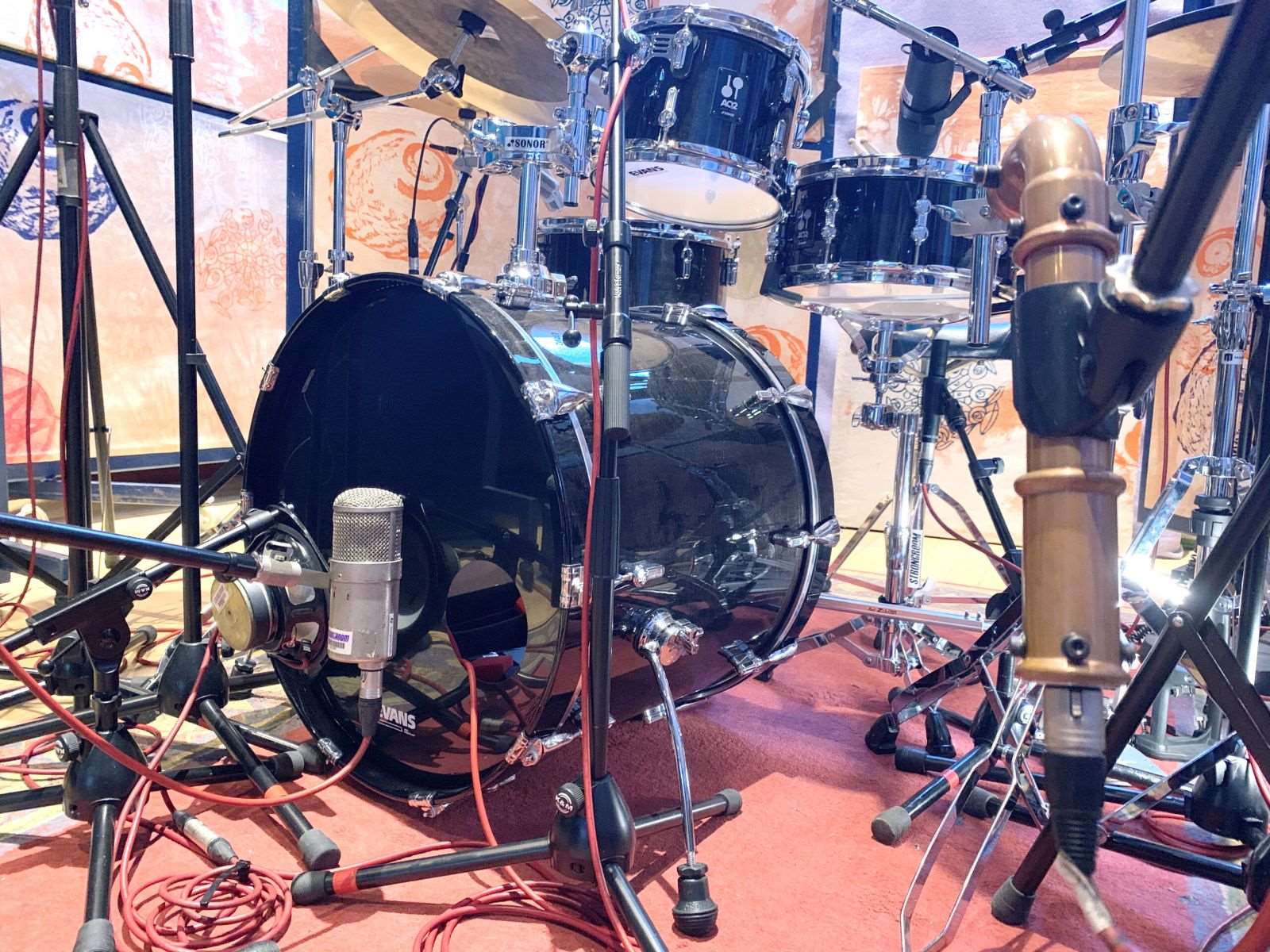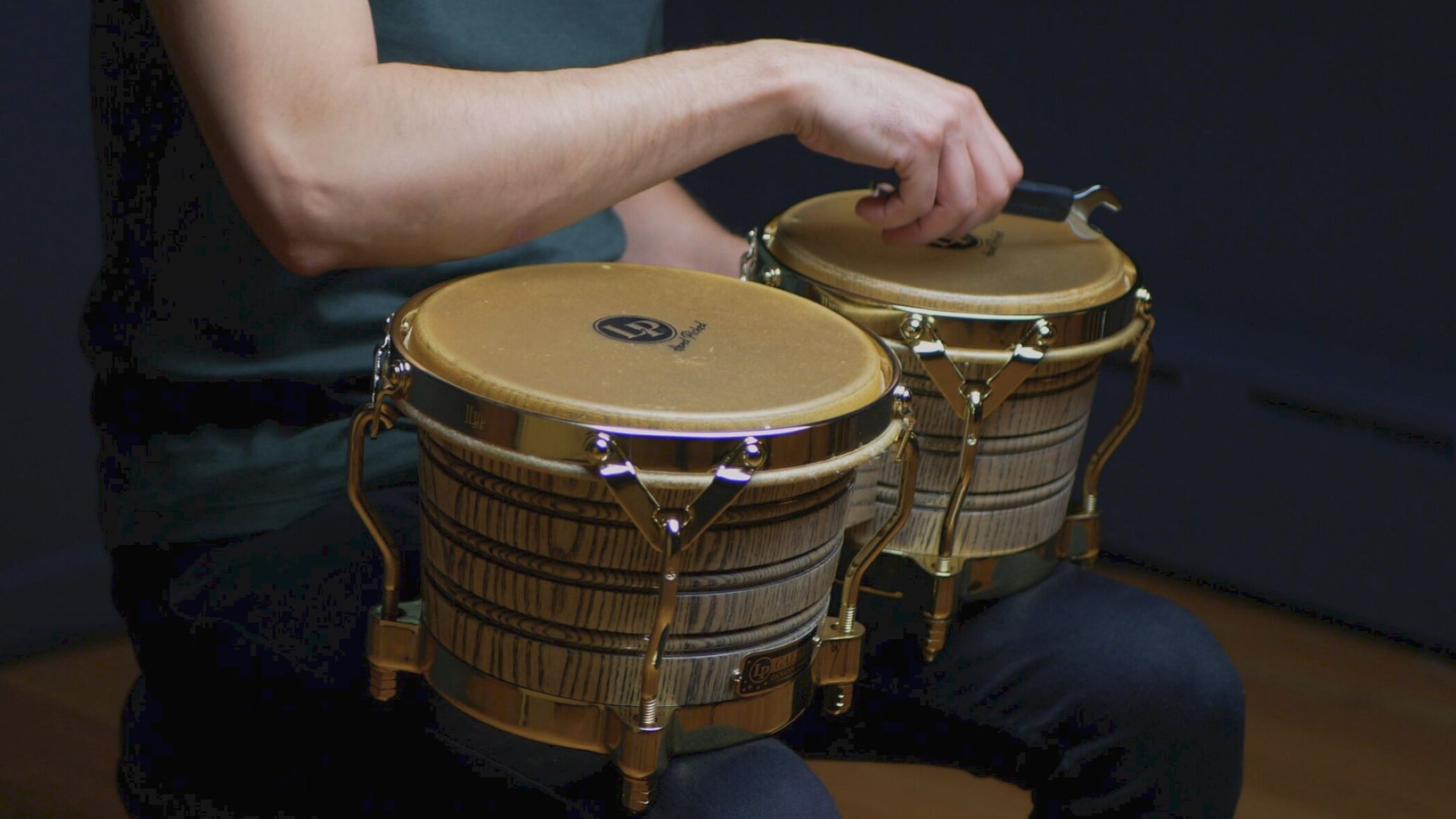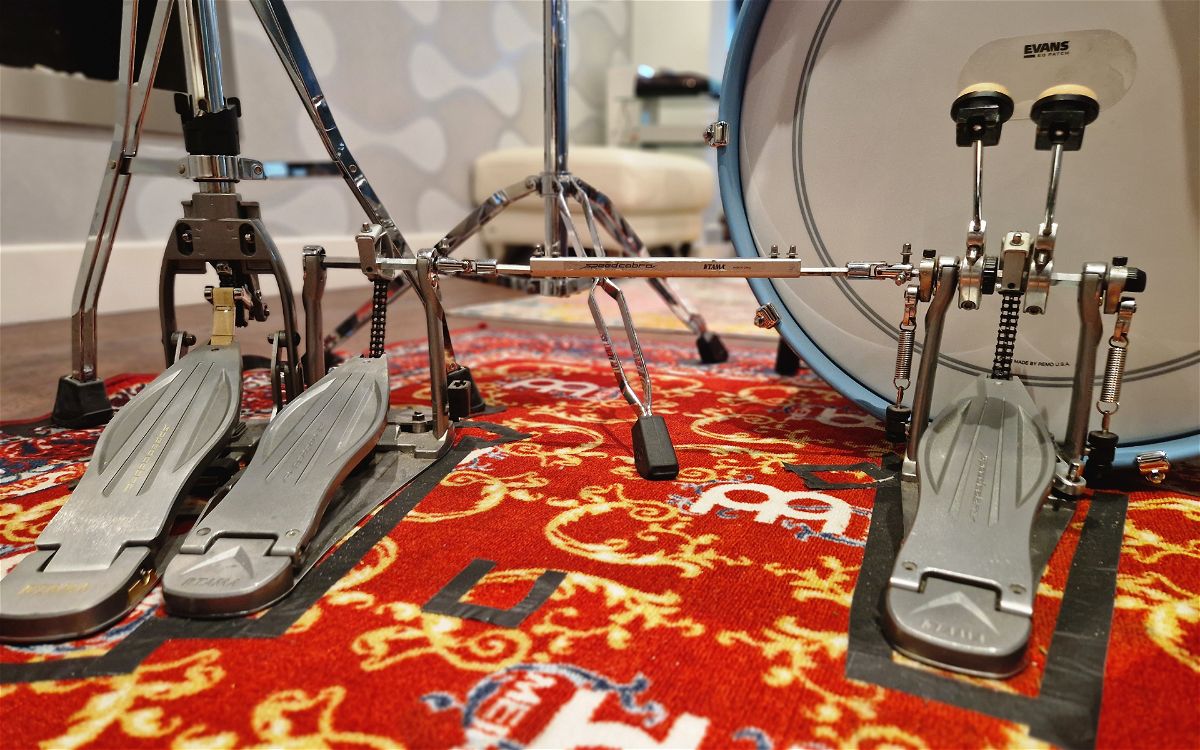Home>Instruments>Bass>How To Tune Bass Drum


Bass
How To Tune Bass Drum
Published: November 29, 2023
Learn how to tune your bass drum for optimal sound quality and performance. Step-by-step instructions and tips to enhance your bass playing experience.
(Many of the links in this article redirect to a specific reviewed product. Your purchase of these products through affiliate links helps to generate commission for AudioLover.com, at no extra cost. Learn more)
Table of Contents
Introduction
When it comes to playing the bass drum, having a well-tuned instrument is crucial for achieving a powerful and balanced sound. Properly tuning your bass drum can enhance the overall quality of your drumming and ensure that you’re getting the best possible tone. Whether you’re a beginner drummer or an experienced musician, understanding how to tune your bass drum is essential.
In this article, we will explore the step-by-step process of tuning a bass drum to help you achieve the desired sound. From preparing the drum to fine-tuning and testing the sound, we will cover everything you need to know to achieve a professional-level bass drum sound.
Tuning a bass drum involves adjusting both the resonant head and the batter head. The resonant head is the side of the drum that faces the audience and creates the drum’s sustain and resonance. The batter head is the side of the drum that you strike with the bass drum pedal, producing the initial attack and tone. By carefully tuning both heads, you can achieve a well-balanced and harmonious sound that cuts through the mix.
Before we dive into the step-by-step process, it’s important to note that every drummer has their own preference when it comes to the sound they want to achieve. Tuning a bass drum is an art form that requires experimentation and adjustments to fit your personal style and musical context. With that in mind, the following steps serve as a general guide to help you get started on your journey to a perfectly-tuned bass drum.
Step 1: Preparing the Bass Drum
Before you begin the tuning process, you need to make sure your bass drum is properly prepared. This involves several important steps that will ensure you have a stable and responsive drum to work with.
First, check the condition of your drumheads. If they are worn out or damaged, it’s best to replace them before attempting to tune the drum. New drumheads provide a clean and consistent surface for tuning, resulting in better sound quality.
Next, ensure that the drum shell is clean and free from any debris or dust. Use a soft cloth or brush to gently remove any dirt from the inside and outside of the drum. This will allow the drumhead to make full contact with the shell and resonate properly.
Once the drum is clean, attach the hoop to the resonant head. The resonant head is typically the one without any dampening elements, such as a hole or internal muffling. Align the hoop with the head and evenly tighten all the tension rods, making sure they are finger-tight and seated correctly.
Now, place the batter head on top of the drum and align it with the hoop. Again, tighten the tension rods evenly, starting with the one closest to you and moving in a star pattern. This ensures an even and balanced tension across the drumhead.
As you tighten the tension rods, listen for any rattling or buzzing sounds. If you hear any, it may indicate that the drumhead is not seating properly. Press down on the center of the drumhead to help it settle evenly on the drum shell.
Once the tension rods are tightened evenly, check the pitch of the drum by tapping near each tension rod with a drumstick. You should hear a consistent and clear tone from each rod. If any of the rods produce a dull or uneven sound, make slight adjustments to the tension until all the rods are producing the desired pitch.
By following these steps to prepare your bass drum, you will ensure that you have a well-maintained and responsive drum to work with during the tuning process. Taking the time to properly prepare your drum will greatly contribute to achieving the best possible sound.
Step 2: Tuning the Resonant Head
Now that your bass drum is properly prepared, it’s time to start tuning the resonant head. The resonant head is responsible for the sustain and resonance of the drum, so it’s important to take the time to tune it correctly.
To begin, tap the center of the resonant head with a drumstick. Listen to the pitch and sustain of the drum. If it sounds too low or too high, you will need to adjust the tension of the head.
Start by loosening all the tension rods of the resonant head. This will bring down the pitch and allow you to make more precise adjustments. Once the tension rods are loose, begin tightening them evenly, moving in a star pattern around the drum.
As you tighten the tension rods, tap the head near each rod to listen for any inconsistencies in pitch. Aim for an even and balanced sound across the drumhead. Continue adjusting the tension until you achieve the desired pitch and sustain.
If you’re unsure of the pitch you’re aiming for, you can experiment by matching it to a reference pitch. This can be done by using a piano, a tuner, or another instrument that can produce a precise pitch. Alternatively, you can simply trust your ears and adjust the tension until it sounds pleasing to you.
Remember that the resonant head should have a slightly lower tension compared to the batter head. This allows the drum to produce a deeper and more resonant tone. However, be careful not to make the tension too loose, as it can result in a flabby or undefined sound.
Once you’re satisfied with the tuning of the resonant head, tap the drum near each tension rod again to ensure that the pitch is consistent. Make any necessary adjustments to fine-tune the head until you achieve a balanced and harmonious sound across the drum.
Tuning the resonant head is a crucial step in achieving a well-balanced and resonant bass drum. Take your time and trust your ears to guide you in finding the perfect pitch for your drum.
Step 3: Tuning the Batter Head
After tuning the resonant head, it’s time to move on to tuning the batter head. The batter head is the side of the drum that you strike with the bass drum pedal, and it plays a crucial role in producing the initial attack and tone of the drum.
Begin by tapping the center of the batter head and listening to the pitch and tone it produces. If it sounds too low or too high, you will need to adjust the tension of the head.
Similar to tuning the resonant head, start by loosening all the tension rods of the batter head. This will allow you to make accurate adjustments and bring the pitch down if necessary. Once the tension rods are loose, begin tightening them evenly, again using a star pattern as a guide.
As you tighten the tension rods, tap the head near each rod to listen for any inconsistencies in pitch. Aim for an even and balanced sound across the drumhead. Pay attention to the attack and tone produced by each rod and make any necessary adjustments to achieve the desired sound.
When tuning the batter head, it’s common to aim for a slightly higher tension compared to the resonant head. This helps produce a punchy and defined tone while still allowing the drum to resonate. However, be cautious not to overtighten the head, as it can result in a choked and unnatural sound.
As with the resonant head, you can also use a reference pitch or trust your ears to guide you in tuning the batter head. Experiment by tapping the head at different points and adjusting the tension as needed until you achieve the desired attack and tone.
Once you have tightened the tension rods and fine-tuned the batter head, tap the drum near each tension rod again to ensure that the pitch is consistent across the drumhead. Make any necessary adjustments to ensure a balanced and harmonious sound.
Tuning the batter head is crucial for achieving a well-defined and powerful bass drum sound. Take your time, experiment with different tensions, and trust your ears to guide you in finding the perfect balance and tone for your drum.
Step 4: Fine-Tuning and Adjustments
Once you have tuned both the resonant head and the batter head, it’s time to fine-tune and make any necessary adjustments to achieve the perfect sound. This step allows you to further refine the tone and response of your bass drum.
Start by listening to the drum as a whole. Play it with your bass drum pedal and listen for any inconsistencies or imbalances in the sound. Pay attention to the sustain, the attack, and the overall tone of the drum.
If you notice any unevenness in the sound or if certain areas of the drum have a different pitch, you can make small adjustments to the tension rods in those areas. Use your ears and tap the drum near the tension rods to identify any inconsistencies and make subtle changes as needed.
Additionally, you can experiment with using different muffling or dampening techniques to further shape the sound of your bass drum. This can involve adding or removing bass drum muffling tools such as pillows, blankets, or dampening rings to achieve the desired level of resonance and sustain.
It’s important to note that the fine-tuning process is highly individualized and dependent on personal preference. Every drummer has a unique style and sound they aim to achieve, so don’t hesitate to make adjustments that suit your musical needs and taste.
During the fine-tuning process, it can be helpful to take breaks and listen to the drum from different positions in the room. This will give you a different perspective and help you identify any inconsistencies or areas that may need further adjustment.
Remember, tuning a bass drum is an ongoing process. As you become more familiar with your drum and your playing style evolves, you may find that you want to make further adjustments in the future. Embrace this as a part of your drumming journey and continue to experiment and explore different tuning techniques.
By fine-tuning and making adjustments to your bass drum, you can achieve a sound that is uniquely yours and perfectly complements your drumming style.
Step 5: Testing and Evaluating the Sound
After going through the tuning process, it’s important to test and evaluate the sound of your bass drum to ensure that you’ve achieved the desired results. This step allows you to assess the overall tone, projection, and resonance of the drum and make any final adjustments if needed.
Start by playing your bass drum with your bass drum pedal and listen closely to the sound it produces. Pay attention to the balance between the attack and sustain, as well as the overall tone. Does it have the desired punch and clarity? Does it resonate in a pleasing way?
Take the time to play various beats, patterns, and dynamics to fully explore the capabilities of your bass drum. Listen for any inconsistencies or areas where the sound may be lacking or overpowering. Note any adjustments you may want to make.
If you’re unsure about the sound or need a fresh perspective, consider recording yourself playing the bass drum. Listen back to the recording and critically assess the sound quality. This can help you identify any areas that may need improvement.
Be open to seeking feedback from other drummers or musicians who can offer their perspectives on the sound of your bass drum. They may be able to provide valuable insights and suggestions for improvement.
During the testing and evaluation phase, trust your ears and your instincts. Remember that the goal is to achieve a sound that you are happy with and that fits your musical style. Don’t be afraid to make small adjustments to achieve the desired results.
Once you are satisfied with the sound of your bass drum, take note of the tension rod positions and markings so that you can easily replicate the desired tuning in the future.
Keep in mind that the sound of your bass drum may also be influenced by factors such as the drum size, drumhead choice, and the room acoustics. Embrace the process of continually refining and experimenting with your bass drum sound to find what works best for you.
By testing and evaluating the sound of your bass drum, you can ensure that you’ve achieved the desired tone, projection, and resonance. This step allows you to make any final adjustments and fine-tune your drum to suit your unique musical style and preferences.
Conclusion
Tuning your bass drum is an essential skill that every drummer should master. By following the step-by-step process outlined in this article, you can achieve a well-balanced, powerful, and resonant bass drum sound.
Remember that tuning a bass drum is both an art and a science. It requires patience, experimentation, and a keen ear. Each drummer has their own unique sound and musical style, so don’t be afraid to trust your instincts and make adjustments that suit your preferences.
Start by properly preparing your bass drum, ensuring that the drumheads are in good condition and the drum shell is clean. From there, tune the resonant head and batter head in a methodical and even manner, paying attention to the pitch and sustain of the drum.
Once both heads are tuned, fine-tune and make any necessary adjustments to achieve the perfect sound. Listen for any inconsistencies and modify the tension rods as needed. Don’t be afraid to experiment with muffling or dampening techniques to shape the sound to your liking.
Finally, test and evaluate the sound of your bass drum by playing various patterns and dynamics. Take note of any areas that may need improvement and make the necessary adjustments. Trust your ears and seek feedback from others to further refine your drum’s sound.
Tuning your bass drum is an ongoing process, and as your playing style evolves, you may find that you want to make further adjustments. Embrace this journey and continue to explore different tuning techniques to create a sound that is uniquely yours.
By mastering the art of tuning your bass drum, you’ll be able to achieve a professional-level sound that enhances your drumming and elevates your overall performance. So, grab your drum key, get in tune, and unleash the powerful and harmonious sound of your bass drum!











